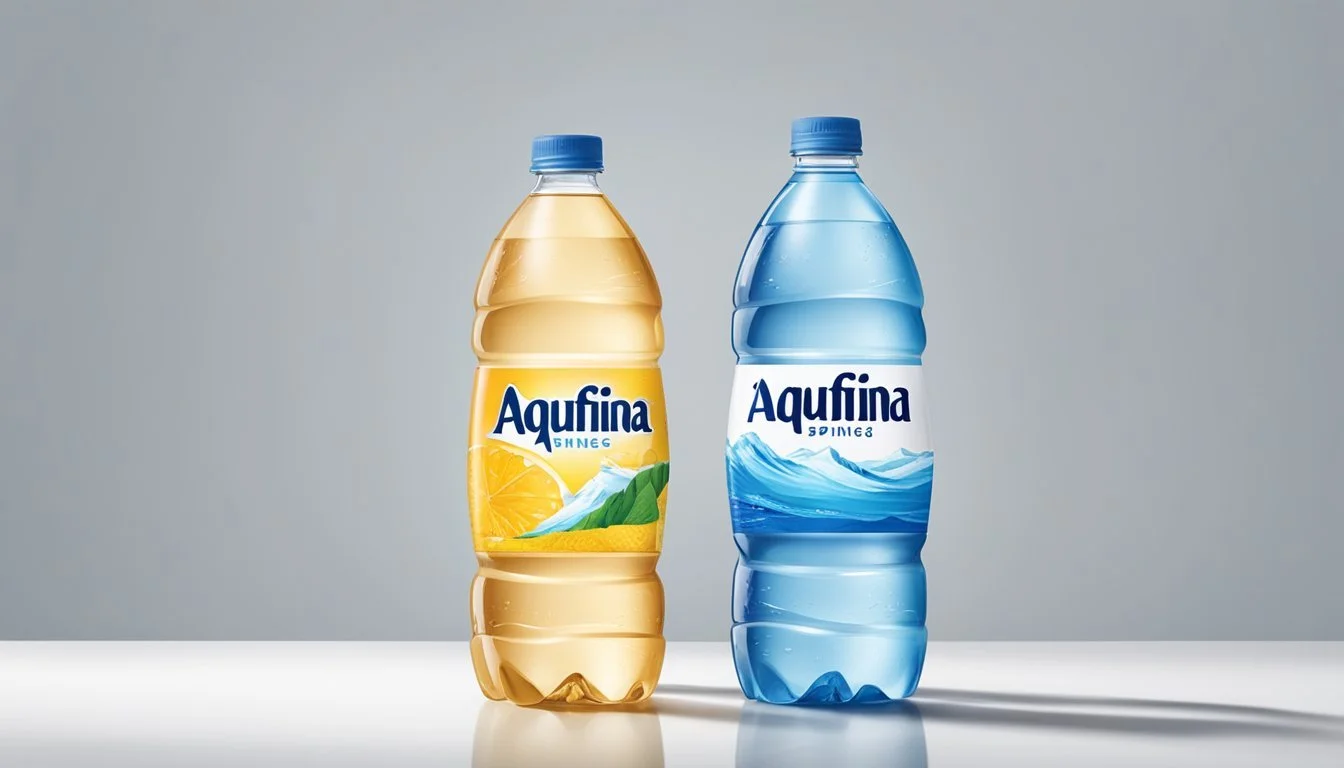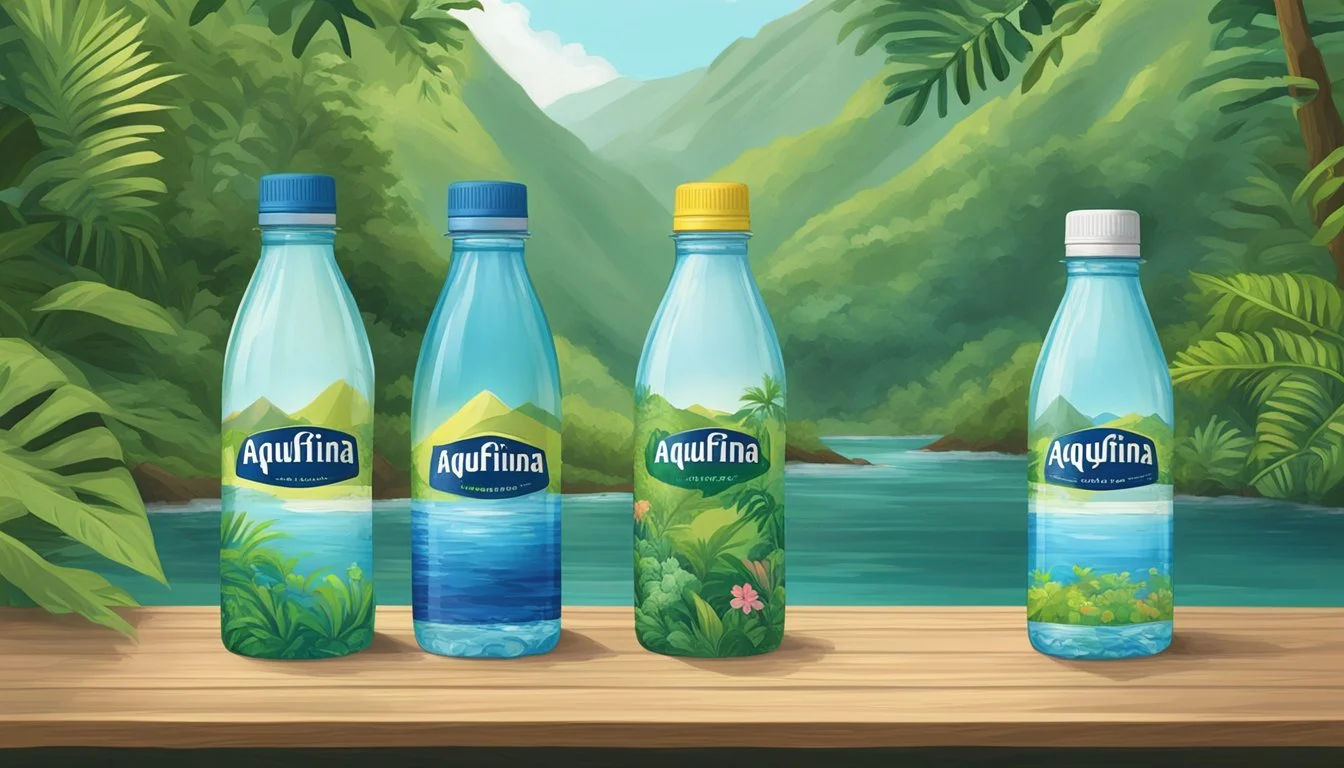Aquafina vs. Hawaiian Springs
Detailed Comparison of Top Bottled Waters
When it comes to choosing bottled water, two brands that often stand out are Aquafina and Hawaiian Springs. Aquafina boasts a rigorous purification process named HydRO-7, involving reverse osmosis, ultraviolet light, and ozone sterilization. This results in a clean and reliable product sourced from local municipalities, making it a popular choice for consumers seeking purity and hydration.
Hawaiian Springs, on the other hand, sources its water from natural aquifers in Hawaii, which are naturally filtered by volcanic rocks. This gives Hawaiian Springs water a unique, refreshing taste that many consumers appreciate. The distinct geology of the Hawaiian islands imparts a subtle mineral flavor that differentiates it from other brands.
For those prioritizing purity and a consistent taste, Aquafina is the better option, while Hawaiian Springs appeals to those looking for natural filtration and unique mineral content. These differences highlight how water sources and purification processes can significantly impact bottled water quality and consumer preferences.
Understanding Bottled Water
Bottled water comes in various types, with differences in sources, filtration methods, and regulatory standards. Additionally, there are considerable environmental implications associated with the packaging of bottled water.
Types of Bottled Water
Bottled water primarily includes spring water, purified water, and mineral water.
Spring water is derived from natural springs and undergoes minimal processing. It retains the natural mineral content from its source.
Purified water undergoes additional purification processes, such as reverse osmosis or distillation, removing most impurities and contaminants.
Mineral water contains specific amounts of naturally occurring minerals and is bottled at the source.
Regulatory Standards
The quality and safety of bottled water are regulated by FDA guidelines in the United States. The FDA ensures that bottled waters meet safety standards similar to those set by the EPA for tap water.
Labeling requirements specify the type of water and source, while testing protocols aim to detect contaminants and maintain quality. Bottled waters must adhere to strict microbiological standards, testing for bacteria, lead, and other harmful compounds to ensure consumer safety.
Environmental Impact of Plastic Bottles
The production and disposal of plastic bottles have significant environmental consequences.
Producing bottled water often involves petroleum-based plastics, creating a considerable carbon footprint. Additionally, the improper disposal of plastic bottles leads to environmental pollution, harming ecosystems and wildlife.
Efforts to reduce these impacts include using recycled materials for packaging and promoting eco-friendly alternatives like reusable bottles. Some brands are incorporating biodegradable plastics to minimize their environmental footprint.
Encouraging recycling and responsible consumption habits is critical to addressing the environmental challenges associated with bottled water packaging.
Comparative Analysis: Aquafina and Hawaiian Springs
This section compares Aquafina and Hawaiian Springs, focusing on their brand reputations, water sources, filtration processes, taste profiles, and health benefits.
Brand Overview
Aquafina, produced by PepsiCo, is well-known for its widespread availability and consistent quality. Its reputation stems from a stringent purification process, ensuring high standards.
Hawaiian Springs, on the other hand, is a premium brand celebrated for its natural origin and purity. Sourced from volcanic rock in Hawaii, it aims to provide a unique and refreshing taste.
Both brands have carved a niche in the bottled water market, though they target slightly different demographics and consumer preferences.
Source and Filtration Process
Aquafina uses a rigorous HydRO-7 filtration process. This includes reverse osmosis, which effectively removes impurities.
Hawaiian Springs draws its water from naturally filtered sources through volcanic rock. This process enriches it with minerals and contributes to its freshness.
Aquafina relies on advanced technology to ensure purity, while Hawaiian Springs emphasizes nature's own filtration mechanisms. Each method has its benefits, contributing to the distinctive characters of the two waters.
Taste Profile and Mineral Content
The taste of Aquafina is often described as clean and crisp, devoid of any aftertaste. This is largely due to its extensive purification that removes any residual elements.
Hawaiian Springs offers a smooth and slightly sweet taste, attributed to the natural minerals like calcium and magnesium it retains from its volcanic source.
In terms of mineral content, Aquafina is more muted, focusing on purity, while Hawaiian Springs enriches its water with natural electrolytes and minerals, enhancing both taste and potential hydration benefits.
Health and Hydration Benefits
Aquafina provides a pure hydration option free from contaminants. Its low mineral content makes it a suitable choice for those looking for plain, clean water without added minerals.
Hawaiian Springs promotes hydration through its naturally occurring minerals and slightly alkaline pH level. These elements can contribute to better electrolyte balance and potentially improved hydration.
Both brands offer health benefits, but Hawaiian Springs might appeal more to those seeking naturally enhanced water. Aquafina, meanwhile, remains a trusted choice for straightforward hydration needs.
Other Market Competitors
When comparing Aquafina and Hawaiian Springs, it's useful to explore how they stack up against other popular bottled water brands in terms of price, accessibility, and consumer perceptions.
Price and Accessibility Comparisons
Aquafina and Hawaiian Springs are often compared to other brands like Dasani, Fiji Water, Evian, Smartwater, Voss, Poland Spring, and Nestlé Pure Life.
Aquafina typically offers a broad range of sizes and is widely available in supermarkets and convenience stores, often at lower prices due to its extensive distribution network.
Hawaiian Springs is perceived as more of a premium brand, which may lead to higher prices and limited availability compared to the more ubiquitous Aquafina.
Dasani, produced by Coca-Cola, is similarly priced to Aquafina and shares its wide availability. Fiji Water and Voss both occupy the higher end of the price spectrum, positioning themselves as luxury brands with unique packaging and exotic sources.
Evian and Smartwater find themselves in the mid-to-high price range, appealing to health-conscious consumers and those who appreciate mineral-rich water.
Poland Spring and Nestlé Pure Life usually offer competitive prices, reflecting a focus on affordability and accessibility for a broad consumer base.
Brand Perceptions
Brand perception plays a significant role in consumer choice among bottled waters.
Aquafina has established itself as a reliable and economical option, targeting everyday hydration needs. Its branding emphasizes purification and quality assurance, appealing to a broad demographic.
Hawaiian Springs markets itself on its unique source and premium quality, often attracting health-conscious consumers who value purity and exceptional taste.
Dasani and Smartwater leverage their parent companies (Coca-Cola and Glaceau, respectively) to build strong brands centered on purity and enhanced benefits, such as added electrolytes.
Fiji Water boasts an image of pristine, natural water sourced from a remote location, appealing to consumers looking for premium, exotic options.
Voss with its elegant packaging targets a niche market looking for luxury and refinement in their bottled water.
Evian emphasizes its natural mineral content, positioning itself as a choice for those seeking health benefits.
Poland Spring and Nestlé Pure Life focus on trustworthiness and widespread availability, resonating with consumers prioritizing value and dependability.
Behind the Labels: Ownership and Ethical Practices
This section explores who owns Aquafina and Hawaiian Springs and examines their ethical practices, especially in terms of corporate transparency and sustainability.
Corporate Transparency
Aquafina is a product of PepsiCo, a global beverage and snack giant. PepsiCo is known for its extensive public reporting on various aspects of its business, including financial performance and corporate responsibility. This transparency helps investors and consumers understand the company's activities and commitments.
Hawaiian Springs, on the other hand, is a smaller player in the bottled water industry. While it does not have the same level of detailed public reporting as PepsiCo, Hawaiian Springs emphasizes its local roots and connection to Hawaiian natural resources. Information about its ownership and business practices is sometimes less readily available, which can be a concern for consumers seeking transparency.
Sustainable Practices
PepsiCo has made significant commitments to sustainability, particularly with Aquafina. The company aims to reduce plastic waste through increased use of recycled materials and better packaging designs. They have several initiatives aimed at conserving water and reducing their carbon footprint, aligning with broader corporate sustainability goals.
Hawaiian Springs prides itself on bottling natural spring water with minimal environmental impact. They advocate for sustainable sourcing practices and highlight their use of eco-friendly packaging. Despite being smaller, their localized focus often allows them to implement and highlight more direct sustainability measures within their operations.
While PepsiCo's global scale allows for widespread impact, Hawaiian Springs’ localized approach often provides a different but tangible commitment to environmental stewardship.
Scientific Analysis of Water Quality
Water quality analysis for bottled water involves examining specific chemistry aspects that impact taste and safety. This section will address pH levels, alkalinity, contaminants, and additives.
pH Levels and Alkalinity
pH levels in water indicate its acidity or alkalinity on a scale from 0 to 14, with 7 being neutral. Aquafina typically undergoes reverse osmosis and demineralization, leading to a near-neutral pH. In contrast, Hawaiian Springs boasts natural alkalinity, due to local minerals like calcium and magnesium, often giving it a pH above 7.
Alkaline water proponents claim it can neutralize acid in the bloodstream, though these health benefits lack consensus. Nevertheless, the pH can influence flavor, with higher alkalinity often resulting in a smoother taste.
Presence of Contaminants and Additives
Examining for contaminants such as BPA, heavy metals, and pathogens is critical. Aquafina's purification process involves reverse osmosis and ozone treatment, ensuring a low contaminant presence. This intensive purification also means it often lacks natural minerals unless they are added later.
Hawaiian Springs, sourced from natural springs, can contain naturally occurring minerals. These include beneficial ions like calcium and magnesium but require careful testing to ensure harmful contaminants are absent. Unlike Aquafina, Hawaiian Springs doesn't involve adding or removing minerals artificially, relying instead on natural filtration.
Exploring Consumer Preferences
Consumer preferences for bottled water can greatly impact brand loyalty and influence, especially with social media playing a significant role in shaping opinions. Understanding these factors helps in comparing Aquafina and Hawaiian Springs effectively.
Consumer Loyalty and Brand Advocacy
Consumers develop loyalty towards bottled water brands based on taste, consistency, and brand values. Aquafina, with its HydRO-7 filtration process, appeals to those who prioritize purity. Hawaiian Springs, sourced from volcanic origins, attracts those who cherish natural taste.
Frequent purchasers of Aquafina often highlight its clean taste and accessibility, reinforcing their loyalty. On the other hand, Hawaiian Springs enthusiasts praise its unique flavor profile, which they associate with premium quality. Brand advocacy often translates into word-of-mouth referrals and online endorsements, cementing consumer loyalty.
Influence of Social Media and Reviews
Social media platforms like Twitter and YouTube serve as significant battlegrounds for bottled water brands. Influencers and everyday users frequently post reviews, showcasing their experiences with Aquafina and Hawaiian Springs.
Positive mentions and high ratings can boost a brand's reputation. Aquafina benefits from its wide distribution and frequent presence in taste tests. Hawaiian Springs gains an edge from reviews that highlight its natural aftertaste and eco-friendly packaging.
Email newsletters, promotions, and interactive content further engage consumers, keeping them informed and invested. The real-time nature of social media allows for immediate feedback, helping brands adapt and improve rapidly according to consumer preferences.





